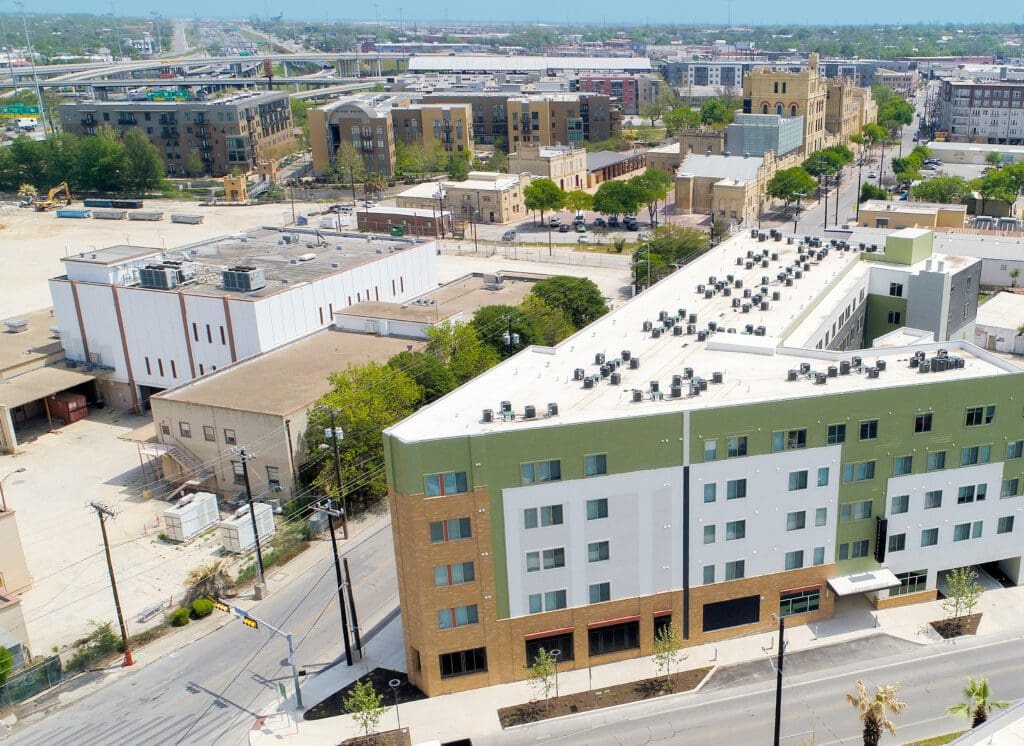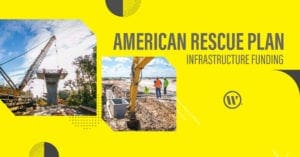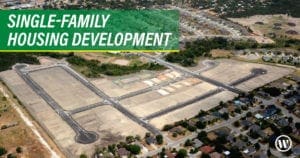
WGI Paves Over Expectations; Accolades and Growth Already Exceed Last Year
WGI has been in overdrive for the first three quarters of 2019, exceeding 2018 in the expansion of its employees, services, clients, and geographic footprint.
Learn from award-winning professionals — explore our whitepapers, blogs, and the latest industry updates.
Join our dynamic organization of engineers, land surveyors, landscape architects, environmental scientists, and architects!
Talk to a market leader today! We’ll answer any questions you have about our professional services.

Download this article as a PDF
Every property development project poses unique site-specific challenges. Local land-use and zoning requirements can complicate development plans; the site’s geographic and geological characteristics can necessitate creativity and flexibility; and of course, local politics often come into play.
As you prepare your real property for development, it’s essential to understand and face the zoning, political, and unique site challenges — and create a comprehensive strategy for overcoming them.
Most cities utilize zoning maps to demonstrate permitted land uses, and the City of San Antonio is no different. These zoning maps will serve as your guide for how you can and can’t develop a given site. The map breaks down geographic sections of the city or town into categories of development, with specific permitted uses and building restrictions for each category.
The first step is understanding how these land-use regulations impact your intended development, and whether your plans are consistent with community standards. Based on your review of current zoning regulations, you’ll recognize if your project can be built “as of right,” or if zoning changes are required. Typically, any necessary zoning changes require approval at one or more public hearings, involving outreach to adjacent property owners, city staff, and elected officials.
Development impacts the environment, so most projects encounter some type of environmental regulations or requirements. Local communities understandably want to make sure that site development doesn’t damage local ecosystems.
There are many potential environmental considerations, including endangered species, wetlands, and open-space requirements. Also, because much of the San Antonio region sits on top of the Edwards Aquifer, a geological assessment might be necessary to determine whether the land you’re developing has sensitive features, such as sinkholes, caves, and wetlands, that could impact the project (and be impacted by it). Wetlands are very vulnerable areas, and sinkholes and caves are vital because they recharge our aquifer — the Edwards Aquifer is a vital drinking water supply aquifer recharged this way, and caves also tend to be home to rare or endangered species.
Development requirements (such as impervious cover) and environmental setbacks may vary based on local watersheds. Urban watersheds tend to allow greater impervious cover and watershed-related restrictions can potentially limit development intensity, similar to zoning regulations.
Water quality (stormwater) is always a primary consideration for sites in the presence of the Edwards Aquifer, and those adjacent to the San Antonio River. Natural or engineered filtering systems are often required to clean the first flush of stormwater runoff, either by an appurtenance inside a pipe or sand filter basins. Further complicating matters, a state-level agency — the Texas Commission on Environmental Quality (TCEQ) — is responsible for approving water-quality protection plans, adding another layer of review processes.
Finally, because much of San Antonio was previously developed going back to the early 1700s, site contamination is a particularly important issue — as communities continually become more densely developed, it’s often necessary to reclaim land previously used for heavy industrial purposes. In these situations, the land is often contaminated, and remediation is required prior to redevelopment, particularly when being converted to residential, medical, or education land uses.
For any development, water is a constant concern. Allowing for proper drainage is vital, not just to keep the site from flooding but prevent downstream flooding that could impact other areas and contaminate water sources. All developments are required to demonstrate that any impact caused by development will not affect the regional stormwater drainage system through existing infrastructure or mitigation measures, including detention.
Flooding is a problem across the United States, and its impacts are exaggerated in localized areas based on weather patterns and geography. South-central Texas is known for flash flooding during heavy rainfall events. FEMA Flood Insurance Rate Maps (FIRM) demonstrate known floodplains, while site-specific drainage studies can identify localized flooding conditions or waterway setbacks not readily apparent on the FEMA maps.
Additionally, most navigable waterways are designated as Waters of the U.S. and require Army Corps of Engineers sign-off. If your project impacts a navigable waterway, expect to be working with the Corps — a federal agency — to obtain approvals for your project.
Another essential concern for any new development is water and wastewater capacity, which in most cases is provided by San Antonio Water Systems (SAWS). Can sewer systems handle its discharge? Can water systems provide sufficient water to meet the new development’s needs, including for fire flow? Pipes have finite capacity and if existing infrastructure can’t meet your requirements, you may need to budget for additional utility upgrades.
Consequently, you can assume additional planning is also necessary for future upgrades when your water and wastewater needs inevitably grow over time.
While electric service could have been included in utility entitlements, we chose to break it out separately as a top 10 consideration because, from a timing perspective, obtaining approval for new electric service from CPS Energy has recently become a critical-path item for any housing project in San Antonio. If your development projects include establishing new permanent power service, particularly off-site extensions or infrastructure relocation — it is prudent to commence early coordination with CPS Energy.
CPS controls both the design process and installation through a series of predevelopment, design, and construction meetings and applications. This process can take substantial time and cause challenges when efforts are not made early, at the front end of the project, to engage civil and MEP consultants. Additionally, CPS infrastructure can require significant real estate for installation through easements for transformers or distribution infrastructure that can affect the site-planning process. We would encourage you to work with a team experienced in facilitating permits through this critical agency.
Traffic is a consistently significant concern for local leaders and residents. It’s important to understand how your development will impact local roadways. You might need to plan physical improvements to the roadway network, and/ or for impact fees used to underwrite the cost of new road infrastructure. If your development will increase traffic on local roads — even if those impacts are felt a mile or more from your development — you may be expected to underwrite costs of creating new highway exit and entrance ramps, the addition of new traffic signals, or dedicated turn lanes.
More likely than not, you’ll be expected to conduct a traffic impact analysis (TIA) to determine the anticipated impacts and how to best mitigate them. Additionally, the City of San Antonio will utilize its “rough proportionality” policy to determine necessary financial or construction improvements to off-site roadways. This policy is intended to ensure that required improvements are reasonably related and roughly proportionate to the estimated impact of a proposed development project.
Neighborhood organizations and local elected officials have a substantial impact on entitlements and permitting, particularly in urbanized communities. Some cities give neighborhoods more power to preserve historical buildings and infrastructure, while others rely on community leaders (neighborhood organization leaders, planning area leaders), appointed bodies (planning commission), and/or elected officials (city council) to help guide development and urban-planning policy.
It’s essential to know who is influencing and voting on an individual project, and then establish relationships with those decision-leaders. One truism in development is that all land use is political, and all politics is local. You never want a local leader or elected official to read or hear about a project in the local media — they should first hear about it from you.
New development projects and parking should always be considered together. Depending on your jurisdiction, there may exist both maximum and minimum parking requirements. Additional accessory requirements may include screening measures, parking for electric vehicles (vehicle-charging stations), providing Americans with Disabilities Act (ADA)- accessible, and bicycle parking.
It is not unusual for parking reductions to be available in certain geographic areas, like central business districts, universities, or those areas well-served by public transit. One final parking consideration includes off-street loading and unloading areas, which can be utilized by transportation network companies (TNCs) like Uber or Lyft to safely pick up and drop off passengers. These areas may also be used for deliveries, moving vehicles, or valet service.

We’ve discussed that San Antonio has been settled, in the modern sense, since at least 1718. This rich history is one reason why the City of San Antonio’s Office of Historic Preservation is regularly involved in the review and approval process for new development applications. In addition to desiring the identification, preservation, and/or incorporation of historical structures, the City will be concerned with the possibility for underground archaeological findings.
This is especially sensitive near the San Antonio River and the five historic Spanish-era missions, including its most famous, the Mission San Antonio de Valero (AKA The Alamo). Developers should anticipate the need for archaeological investigations and studies, and the likelihood of additional public hearings based on the property’s history.
Impact fees are the checks you must write to satisfy community requirements before you even put a shovel in the ground. These fees vary across surrounding jurisdictions but generally cover improvements to water and wastewater systems (AKA tap fees or meter fees), affordable-housing fees, fees-in-lieu of parkland dedication, tree-removal mitigation fees, roadway impact fees, drainage impact fees, or multiple other things that communities compel based on their local ordinances. These soft costs may not be part of your development plan, but they are increasingly common. It’s wise to anticipate them in your budgeting.

Most major cities have affordable housing requirements mandating that a specific amount of low-cost housing is created in conjunction with new residential development. As of early 2022, San Antonio has not quite reached that point on most development projects. However, certain City incentive programs limited to specific areas, like the Inner-City Reinvestment and Infill Policy (ICRIP), do have affordability requirements. The City of San Antonio is currently considering ordinances, code updates, and bond-funded programs to encourage more affordable housing.
As you prepare your site for development, it’s imperative to acknowledge and understand the unique zoning, political, and geographic challenges you are likely to face and establish comprehensive strategies to overcome them.
Hiring the right land development team to guide you through the dynamics of the development process can save you an invaluable amount of time (and money). Contact our experts today and let’s get the ball rolling!

WGI is a national design and professional services firm leading in technology-based solutions for the construction of public infrastructure and real estate development. At WGI, we’re providing Tomorrow’s Infrastructure Solutions Today.

WGI has been in overdrive for the first three quarters of 2019, exceeding 2018 in the expansion of its employees, services, clients, and geographic footprint.

The ARP provides $350 billion for state, local, territorial, and tribal governments to address the pandemic’s economic impact. Here’s what you need to know and how WGI can help.

Uncover the comprehensive strategies to help you overcome the unique challenges surrounding new & existing development projects throughout San Antonio, TX!

They say everything’s bigger in Texas and population growth is no exception. In part one of this series, see what you need to keep in mind when planning for current and future growth.

Nearly all construction site operators engaged in clearing, grading, excavation activities that disturb one acre or more, including smaller sites in a larger common plan of development or sale, are required to prepare a SWPPP. WGI can help.

WGI associates participated in an internal contest to pitch innovative ideas to improve the company, their work product, and the built environment.
You’ve been searching for a place like WGI. We look forward to meeting you soon.
Sign up to receive emails to hear our latest news and achievements in our monthly newsletter.
Enter your zip code, and we’ll personalize your experience with local projects, office locations, team members, and more.
WGI supports its associates with meaningful opportunities for growth, strong benefits and perks, while we work collaboratively with clients and co-consultants to shape and improve communities.






WGI is a dynamic organization with opportunities nationwide for engineers, land surveyors, landscape architects, environmental scientists, and architects.